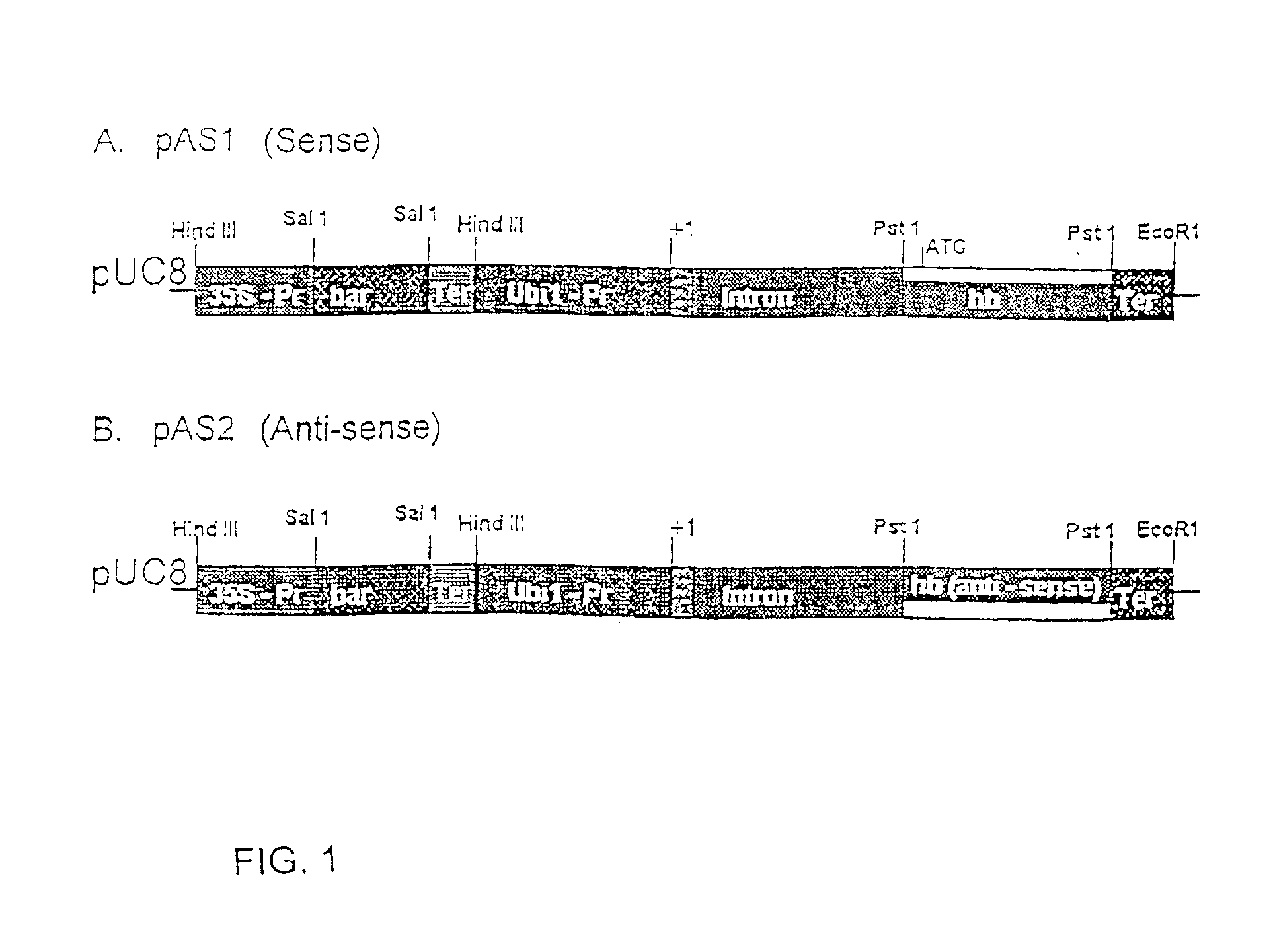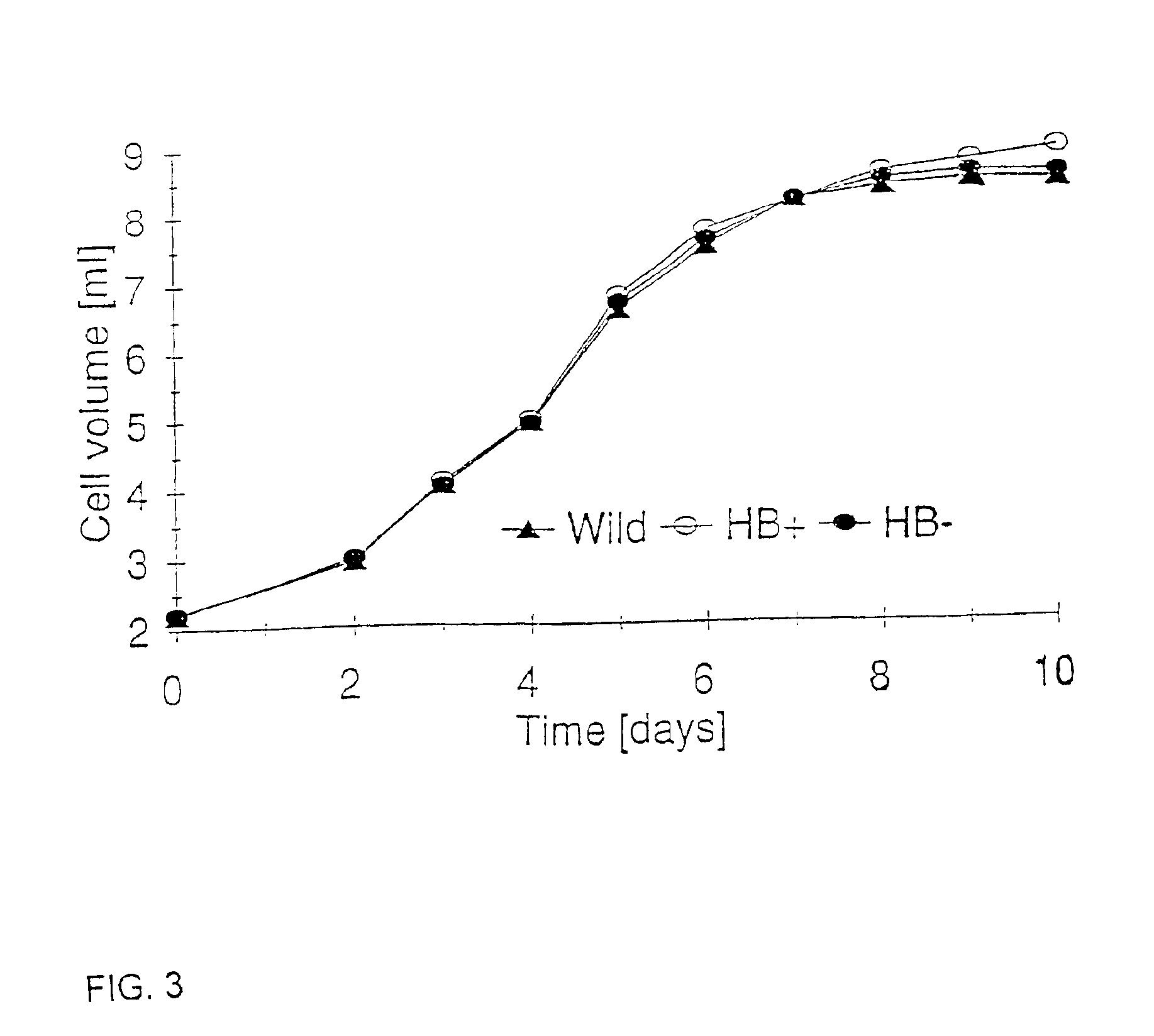Nonsymbiotic plant hemoglobins to maintain cell energy status
a non-symbiotic plant and cell technology, applied in the direction of plant peptides, sugar derivatives, angiosperms/flowering plants, etc., can solve the problem that their function has not been well defined, and achieve the effect of improving the oxygen supply to the organ
- Summary
- Abstract
- Description
- Claims
- Application Information
AI Technical Summary
Benefits of technology
Problems solved by technology
Method used
Image
Examples
example i
[0076]Black Mexican Sweet (BMS) (wild-type), HB+ and HB− maize cells were cultured in 250 ml flasks as cell suspensions in 50 ml of MS medium (Murashige and Skooge, 1962, Physiol Plant 15:473-497) macro and micro elements supplemented with thiamine 0.5 mg / liter, L-asparagine 150 mg / liter, 2,4-dichlorophenoxyacetic acid 2 mg / liter and sucrose 20 g / liter. Cultures were shaken at 150 rpm at 25° C. Cells were subcultured every 7 days. Nitrogen treatment was applied by replacing air in culture flasks with nitrogen and closing the flasks with rubber stoppers, otherwise culture flasks were closed with caps allowing for free exchange of air. Antimycin A was added as a 27 mM stock solution in 2-propanol to give a final concentration of 0.2 mM. Cell samples were collected by filtration. Cell samples used for adenylate measurements were immediately frozen in liquid nitrogen and stored at −80° C. until used.
example ii
Construction of Plant Expression Vectors
[0077]SalI / NotI digested and end-filled barley hemoglobin cDNA was cloned into BamHI digested and end-filled pAHC17 plasmid (Christensen and Quail, 1996, Transgenic Research 5:213-218) in sense and antisense orientation to generate pAS1 (sense) and pAS2 (antisense) plasmids. An EcoRI digested, end-filled with synthetic HindIII linker, 1.35 kb 35S promoter —bar gene— 35S terminator fragment from pDB1 (Becker et al, 1994, Plant J 5:299-307) was inserted into HindIII digested pAS1 and pAS2, as described below.
example iii
Plant Cell Transformation and Selection
[0078]A silicon carbide fibres-mediated transformation system was used as described in Kaeppler et al, 1992, Theor App Genet 84:560-566 to transform BMS maize cells with pAS1 and pAS2 vectors. Resistant colonies were selected on culture medium solidified with 0.2% Phytagel™ (Sigma) and supplemented with glufosinate ammonium at a concentration of 5 mg / liter.
PUM
| Property | Measurement | Unit |
|---|---|---|
| dissociation constants | aaaaa | aaaaa |
| dissociation constants | aaaaa | aaaaa |
| dissociation constants | aaaaa | aaaaa |
Abstract
Description
Claims
Application Information
 Login to View More
Login to View More - R&D
- Intellectual Property
- Life Sciences
- Materials
- Tech Scout
- Unparalleled Data Quality
- Higher Quality Content
- 60% Fewer Hallucinations
Browse by: Latest US Patents, China's latest patents, Technical Efficacy Thesaurus, Application Domain, Technology Topic, Popular Technical Reports.
© 2025 PatSnap. All rights reserved.Legal|Privacy policy|Modern Slavery Act Transparency Statement|Sitemap|About US| Contact US: help@patsnap.com



